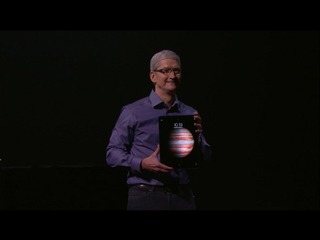New disease models unlocking secrets to neurological research
Advances in technology, like in vitro and microfluidics, have helped advance research
Read more...
At the big Apple event on Wednesday, CEO Tim Cook introduced the newly revamped Apple TV, one that is focused on apps, calling it a new vision for television, based on a transition that was already happening.
“We believe the future of TV is apps," he said. It turns out that he is absolutely right, probably more than he knew.
For the first time ever, the average US consumer is spending more time inside mobile applications than that of TV, according to a new report, released by Flurry on Thursday.
In Q2 of 2015, the average US consumer spent 198 minutes per day inside apps compared to 168 minutes on TV. That is up from 139 minutes in the second quarter of 2014, and 126 minutes in the same quarter in 2013.
The amount of time spent watching TV, interestingly enough, has remained exactly the same across that entire span.

The news gets even worse for television: the chart above does not count time spent in a mobile browser. If it did, the total time spent on mobile devices by the average US consumer becomes 220 minutes. or 3 hours and 40 minutes, per day.
Of course, there could be overlap between TV watching and apps. I know I spend time on my phone while I watch shows, and the rise of the second screen has been well documented.
"It is hard for us to quantify how much of that time spent in apps overlaps with time spent on TV, as the second screen phenomena is clearly prevalent especially among generations Y and Z," Simon Khalaf, SVP, Product & Engineering, Publisher Products at Flurry, wrote in the report.
"So, while time-spent on TV hasn’t decreased, it is hard to say how much of that time is actual watching, versus having background noise to the plethora of apps being actively consumed on mobile devices."
In addition to spending more time in apps, the report also shows that consumers are willing to pay to see content via those apps.
Numerous apps in the media & entertainment category, such as Netflix, Hulu, HBO Now, Spotify and Pandora have ranked highly in the top grossing charts and have ended the gaming industry’s de-facto monopoly on the App Store’s revenues.
"This demonstrates that the mobile consumer has been trained to pay for content," said Khalaf.
And you can see in the chart below that this has led to an increase in revenue coming from paid content. It is expected that this year, revenue from in-app purchases will climb to $33 billion, driven by those entertainment apps.

The final nail in the coffin will come from Apple, which announced its revamped Apple TV service on Wednesday.
It has a 64-bit A8 processor, which allows it to both run apps and to better organize video content, as well as a new remote, with a glass touch panel across the top, which communicates via Bluetooth.
The coolest part of the new Apple TV is how it integrates with Siri, allowing users search based on actor, plot and type of movie. It will allow the user to easily skip ahead, or replay parts of a show they missed, all by voice command.
The new Apple TV also has a new operating system called tvOS, which allowed developers to create new apps for the platform. The Apple TV with 64GB of storage is selling for $149, and the larger model, which also had 64GB, will cost $199.
"After yesterday’s announcement, it turns out fears surrounding the long-term prospects of the cable industry were well warranted. We believe that the industry is facing a perfect storm: Apps, App Stores and Apple," said Khalaf
(Image source:
Advances in technology, like in vitro and microfluidics, have helped advance research
Read more...Robots are taking over the heavy lifting work inside warehouses
Read more...The company also expanded access to 12 different provider types for male fertility care
Read more...